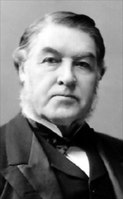Canadian federal election, 1896
|
|
|||||||||||||||||||||||||||||||||||||||||||||||
|
|||||||||||||||||||||||||||||||||||||||||||||||
|
|||||||||||||||||||||||||||||||||||||||||||||||
|
|
|||||||||||||||||||||||||||||||||||||||||||||||
|
|||||||||||||||||||||||||||||||||||||||||||||||
The Canadian federal election of 1896 was held on June 23, 1896, to elect members of the Canadian House of Commons of the 8th Parliament of Canada. Though the Conservative Party won a plurality of the popular vote, the Liberal Party, led by Wilfrid Laurier, won the majority of seats to form the next government.
The governing Conservative Party, since the death of John A. Macdonald in 1891, was disorganized, going through four leaders in five years. The party was also viewed as corrupt and wasteful of public funds. Issues like the Manitoba Schools Question had cost the party support in both French and English Canada.
Entering the election, the Tories were led by Sir Charles Tupper, a Father of Confederation and former Premier of Nova Scotia. Earlier, in February 1896, Tupper introduced remedial legislation to settle the Manitoba dispute, but it was filibustered by an alliance of extreme Protestants led by Dalton McCarthy and the Liberals. This filibuster resulted in Tupper abandoning the bill and asking for a dissolution. Parliament was dissolved on April 24, 1896, and, following the agreement that Tupper would become Prime Minister following the election call, he became prime minister on May 1, 1896, thus forming the 7th Canadian Ministry.
...
Wikipedia



